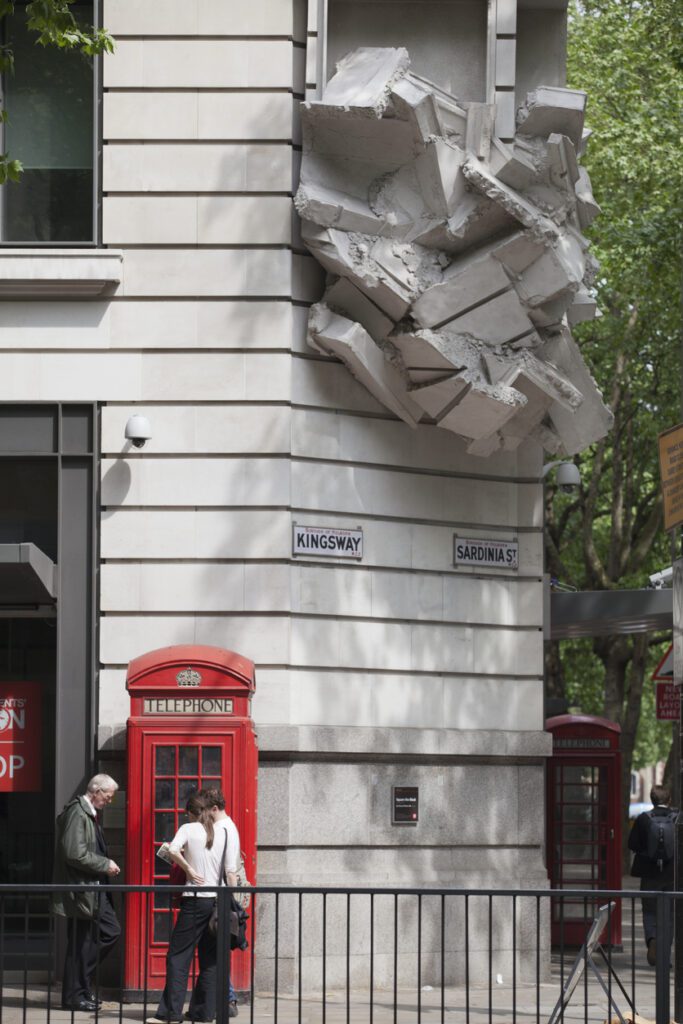 Treble damages may be available when insurance companies act deceptively handling claims under North Carolina North Carolina’s Unfair and Deceptive Trade Practices Act, N.C. Gen. Stat. § 75.1-1. A recent decision involved an obvious “collapse loss” where the insurer searched for a theory that would find no coverage. Collapse losses to buildings are no joke. Serious damage to property and people are at stake. The facts of this collapse show how close having fun can be to a horrific event.
Treble damages may be available when insurance companies act deceptively handling claims under North Carolina North Carolina’s Unfair and Deceptive Trade Practices Act, N.C. Gen. Stat. § 75.1-1. A recent decision involved an obvious “collapse loss” where the insurer searched for a theory that would find no coverage. Collapse losses to buildings are no joke. Serious damage to property and people are at stake. The facts of this collapse show how close having fun can be to a horrific event.
The appellate court noted the loss as follows:
DENC has owned The Crest, an apartment building in Elon, North Carolina, since 2013. It leased The Crest to Elon University for student housing. From November 2017 to November 2018, DENC insured the property with a policy from Philadelphia.
…
In January 2018, students gathered on a second-floor breezeway of The Crest for a party. In the early hours of that night, partygoers began ‘jumping in the breezeway.’ According to a witness, the breezeway ‘abruptly collapsed’ while the students were jumping. Two student reporters arrived in the morning. Both observed that the breezeway was hanging down by more than a foot.1
Reading further into the trial record, the trial judge added:
Two student reporters viewed the breezeway the morning after the party. In their testimony, each characterized what happened to the building as a ‘collapse.’ They each observed that part of the breezeway had fallen to the ground, and the rest was hanging down at least one foot. They each saw a significant amount of debris on the ground below the second-floor breezeway, and a large hole in the ceiling of the first-floor breezeway. Philadelphia has not disputed these facts.2
Given the facts, the first question coming to insurance coverage minds would be—did the policy have collapse coverage?
The appellate court tried to describe the policy:
[T]he policy contained a ‘Collapse Endorsement’ that modified the scope of coverage for ‘collapse’ in the body of the policy. The Collapse Endorsement comprised two parts.Section I of the endorsement modified the policy’s exclusions, deleting and replacing the subsection for ‘collapse.’ Under Section I, the policy excluded:
Collapse, including any of the following conditions of property or any part of the property:
(1) An abrupt falling down or caving in;
(2) Loss of structural integrity, including separation of parts of the property or property in danger of falling down or caving in; or
(3) Any cracking, bulging, sagging, bending, leaning, settling, shrinkage or expansion as such condition relates to (1) or (2) above.
But this exclusion wouldn’t apply to collapse caused by ‘[w]eight of people or personal property’ or to collapse covered in Section II.
Section II modified the policy to expressly cover ‘abrupt collapse,’ which it defined as ‘an abrupt falling down or caving in of a ‘building’ or any part of a ‘building’ with the result that the ‘building’ or part of the ‘building’ cannot be occupied for its intended purpose.’ Id. Still, Section II only covered ‘abrupt collapse’ caused by:
a. ‘Building’ decay that is hidden from view, unless the presence of such decay is known to an insured prior to collapse;
. . .d. Use of defective material or methods in construction . . . if the abrupt collapse occurs after the construction . . . is complete, but only if the collapse is caused in part by . . . [w]eight of people or personal property.
And Section II explained that its coverage wouldn’t apply to:
a. A ‘building’ or any part of a ‘building’ that is in danger of falling down or caving in;
b. A part of a ‘building’ that is standing, even if it has separated from another part of the ‘building’; or
c. A ‘building’ that is standing or any part of a ‘building’ that is standing, even if it shows evidence of cracking, bulging, sagging, bending, leaning, settling, shrinkage or expansion.
Describing policy language to others can be tricky. So I laughed when the trial judge noted in two footnotes:
6 In the body of the policy, it excludes coverage for ‘collapse, except as provided below in
the Additional Coverage for Collapse.’ In the ‘Additional Coverage – Collapse’ provision, coverage is provided for loss ‘caused by or resulting from risks of direct physical ‘loss’ involving collapse of ‘buildings’ or any part of ‘buildings’ caused only by’ specific listed events, including hidden decay and weight of people or personal property. Later in the policy, however, there is an endorsement labelled ‘Collapse – Exclusion and Additional Coverage Restated,’ which deletes both the original exclusion for collapse, and the ‘Additional Coverage – Collapse’ provision, and replaces those provisions with other language, as well as adding additional terms related to ‘collapse.’7 To facilitate ease of reading, the Court has not included ellipses to mark deletion of irrelevant materials, nor has the Court noted changes in capitalization made necessary by context.
After the collapse incident occurred, the insurance company adjuster claimed that undiscovered “water damage” caused the loss. The appellate court then recited the next steps by the insurer:
Philadelphia then sent DENC two letters. The first was a reservation-of-rights letter, explaining that it would keep investigating DENC’s claim. The second letter (sent two days later) informed DENC that it had ‘issued, or will be issuing payment . . . for damages or injuries sustained’ under DENC’s claim. The letter also stated that ‘it appear[ed] another party[] may have caused or contributed to the damages sustained.’ Id. And while it said that Philadelphia would seek reimbursement from the ‘responsible party,’ the letter didn’t specify who that party was.
At this point, it appeared that Philadelphia was going to pay for the loss. But as is so often the situation now, an engineer was sent by the insurance company who found a theory where coverage could be denied:
Philadelphia hired a structural engineer to assess the breezeway. He concluded that ‘long-term water intrusion [] ultimately resulted in the wood framing (structural) member’s inability to support the dead (slab) and live (occupant) loads.’ He suggested that the original building contractor failed to ‘properly install a water management system on the walls’ or a ‘properly integrated waterproof system.’ These failures, the engineer said, resulted in ‘long-term repeated moisture exposure’ to the breezeway’s wood framing.
After reviewing the engineer’s report, Philadelphia sent DENC a third letter. This time, Philadelphia said that it would deny coverage.
The trial court ruled that the “collapse” was covered, and the appellate court affirmed. That discussion is worth a separate blog and a presentation about the “collapse” peril. However, the appellate court focused on the improper and strained reasoning for the denial:
As the district court aptly put it, Philadelphia’s ‘framing ignores the Collapse Endorsement’s focus on whether the event was a collapse.’ The engineers’ testimony explains what (in their view) caused the collapse. But it sidesteps the relevant question of whether the breezeway abruptly collapsed. On that point, Philadelphia is silent—with good reason. The undisputed evidence shows the breezeway fell suddenly by at least a foot. With no definition of ‘abrupt collapse’ in the policy that excludes these circumstances, we find that requirement satisfied.
…
Consider the facts leading to Philadelphia’s denial of coverage. Shortly after the breezeway’s collapse, Philadelphia advised DENC that it would be investigating the claim under a reservation of rights. Two days later, Philadelphia stated that it had ‘issued, or [would] be issuing payment’ to DENC. J.A. 530. Yet a few weeks after that, Philadelphia denied DENC’s claim in a letter that failed to reference its earlier agreement to pay.
And as the district court determined, ‘[n]othing in the denial letter links ‘the basis in the insurance policy’ for the denial ‘to the facts,’ as required by § 58-63-15(11)(n).’ The letter relayed Philadelphia’s water-damage findings and then, in rote fashion, recited purported policy terms. It denied coverage because DENC’s damage was the result of long-term water intrusion and deteriorated wood framing.
But none of the policy provisions Philadelphia listed in the denial letter used the phrase ‘water intrusion.’ Nor did the letter explain which of the many enumerated provisions barred coverage. This is particularly troubling because ‘some of the provisions set forth in the letter were not even part of the policy; several had been deleted and superseded by policy amendments or endorsements. Others patently [didn’t] apply to the breezeway collapse at issue, such as those citing flood or steam boilers.’ Philadelphia even included ‘the wrong provision governing collapse.’ The drafters of the denial letter conceded these errors.
The district court was right to find that Philadelphia offered no ‘reasonable explanation’ for denying coverage, which § 58-63-15(11)(n) requires. Even though the letter said that no ‘covered collapse commenced’ during the coverage period, it didn’t explain (much less reasonably so) why the policy’s operative Collapse Endorsement didn’t cover the loss. Instead, it left DENC to decipher a morass of largely inapplicable policy language with no clear connection to Philadelphia’s factual investigation.
…
In our view, restating the facts gets Philadelphia no closer to explaining the interaction of those facts with the policy. And § 58-63-15(11)(n) requires that insurers do more than list all potentially applicable policy terms alongside the facts. Indeed, an insurer must reasonably explain the denial’s ‘basis in the insurance policy in relation to the facts.’ N.C. Gen. Stat. § 58-63-15(11)(n) (emphasis added); Relation, WEBSTER’S THIRD NEW INT’L DICTIONARY (1976) (‘Reference, respect’).
…But Philadelphia had the duty to reasonably spell out that connection in the first instance. Instead, it tried to hide the ball by requiring DENC to sift through many other unexplained (and irrelevant) policy provisions, which were not the basis for the denial. After inundating DENC with admittedly inapt policy terms, Philadelphia failed to identify which exclusion was at play. Permitting that obfuscation asks too much of the insured and too little of the insurer.
This is a case worth reading in its entirety. The case has an instructive discussion of collapse loss and relevant language found in many policies. There is also a great discussion of extra expense coverage when tenants are forced to temporarily move away from the premises. Finally, if you do work in North Carolina, it is important to note how deceptive practices in the denial of a claim can lead to treble damages.
Thought For The Day
Shaking hands with the Queen of England was a long way from being forced to sit in the colored section of the bus going into downtown Wilmington, North Carolina.
—Althea Gibson
_____________________________________
1 DENC, LLC v. Philadelphia Indem. Ins. Co., No. 20-1640 (4th Cir. Apr. 18, 2022).
2 DENC, LLC v. Philadelphia Indem. Ins. Co., No. 1:18-cv-754 (M.D. N.C. Oct. 15, 2019).




